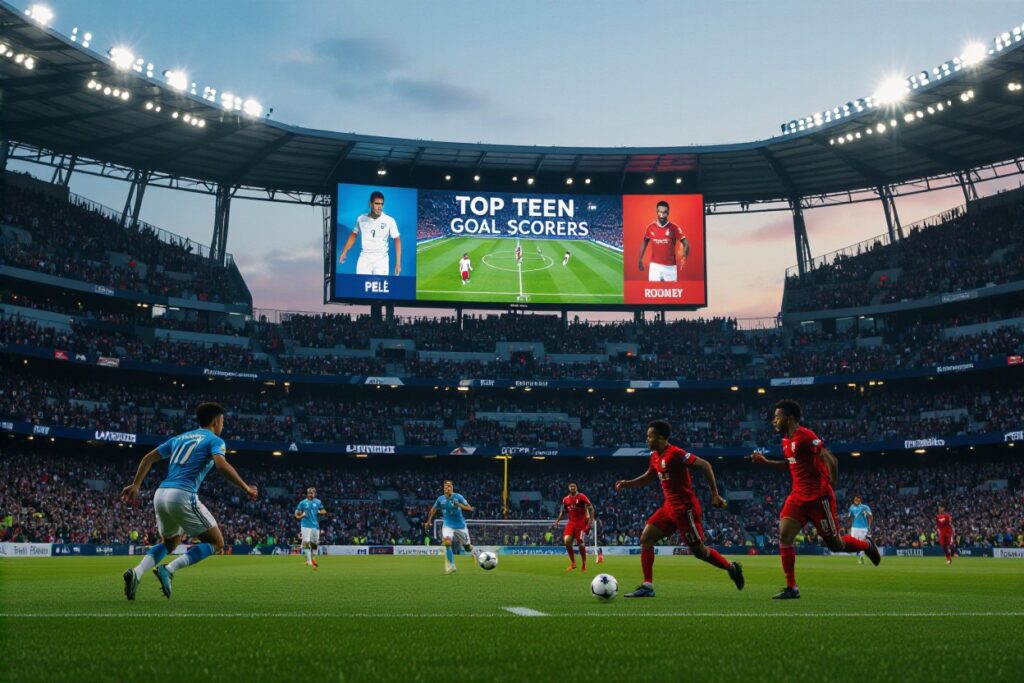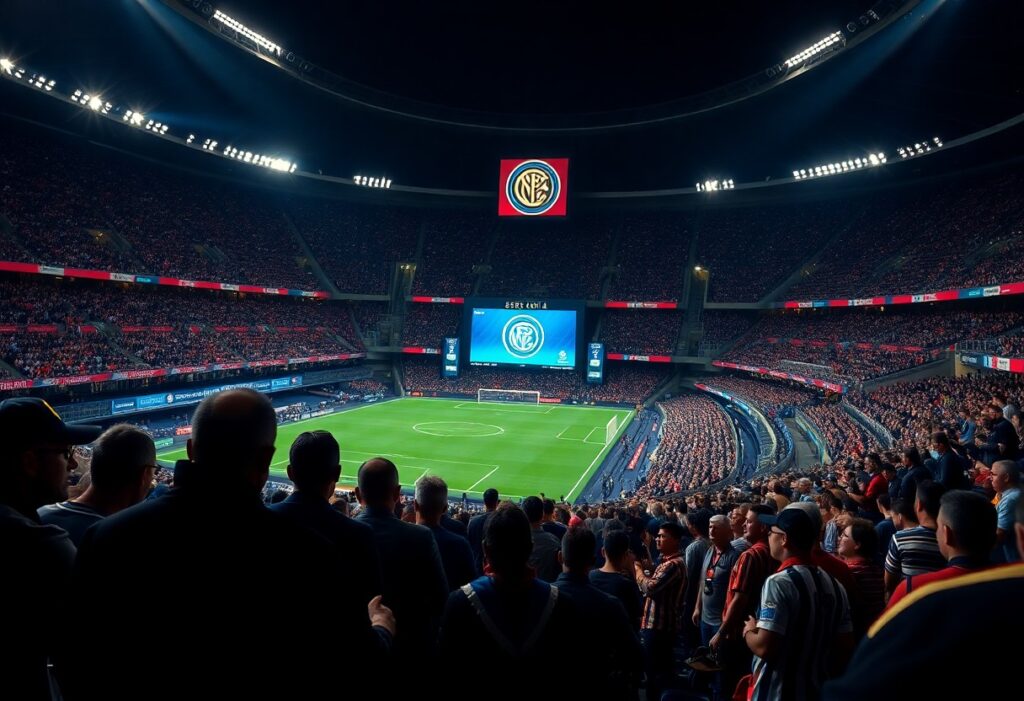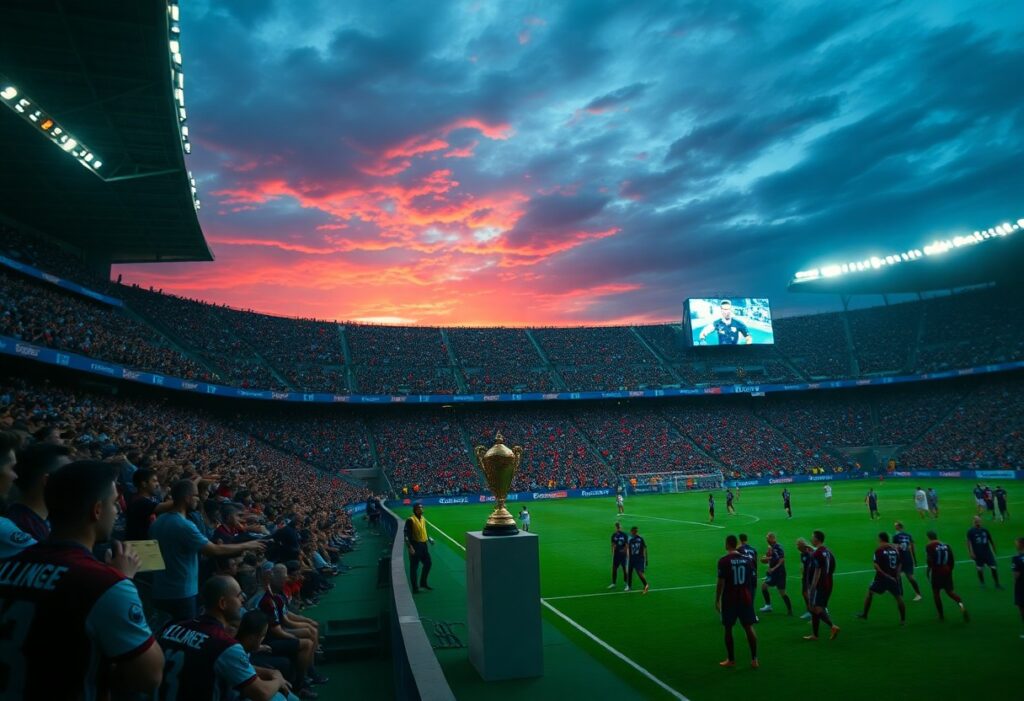
Just when you think you’ve seen everything in football, teenage sensations emerge to rewrite the history books. Throughout the beautiful game’s rich legacy, extraordinary young talents have shattered scoring records and left seasoned defenders in awe. From Pelé’s meteoric rise in the 1950s to modern-day phenoms like Erling Haaland, these teenage goal-scoring machines have proven that age is merely a number when it comes to finding the back of the net. You’re about to discover the remarkable stories of football’s most prolific teenage marksmen who turned professional defenders into spectators.
The Record-Breaking Faces of Young Talent
Modern football has witnessed an unprecedented surge in teenage goalscoring talent. Players like Erling Haaland, Kylian Mbappé, and Eduardo Camavinga have shattered previous records, demonstrating that age is merely a number in top-flight football. Their achievements have redefined expectations for young forwards, setting new benchmarks for future generations.
The Evolution of Teenage Goal Scorers
Today’s teenage strikers benefit from advanced training methods, sports science, and professional development programs that weren’t available to previous generations. You’ll notice how modern academies now focus on technical skills and tactical awareness from ages as young as 8-10, producing more refined goalscorers at younger ages. This systematic approach has led to prodigies like Youssoufa Moukoko breaking into first-team football at just 16.
Cultural and Historical Context of Young Goalscoring Phenomena
Different football cultures have varying approaches to nurturing young talent. Brazilian football has historically embraced teenage phenoms, with Pelé scoring his first World Cup goal at 17. European clubs traditionally favored a more cautious approach, but you’ll see this changing with clubs like Ajax and Monaco building their strategies around young talent development.
The social media era has amplified the spotlight on young goalscorers, creating both opportunities and pressures. You’ll find that teenage sensations now command transfer fees exceeding €100 million, while dealing with global attention before turning 20. This new reality has prompted clubs to invest heavily in psychological support and media training for their young stars, ensuring their talent flourishes under intense scrutiny.
Legends of the Pitch: Icons Among Teen Scorers
The Impact of Pelé and Diego Maradona
Pelé and Maradona redefined what teenage footballers could achieve. At just 17, Pelé scored six goals in the 1958 World Cup, becoming the youngest player to win the tournament. Maradona began his professional career at 15 with Argentinos Juniors, netting 115 goals in 167 appearances before turning 20. Their extraordinary achievements set new standards for young talents, proving that age was no barrier to excellence on football’s biggest stages.
The Rise of Modern Phenoms: Messi, Ronaldo, and Beyond
Modern football has witnessed the emergence of teenage sensations who’ve followed in these legendary footsteps. Lionel Messi scored his first Barcelona goal at 17, while Cristiano Ronaldo netted three goals for Sporting CP before turning 18. Kylian Mbappé shattered records with Monaco, becoming the youngest player to reach 50 Ligue 1 goals. These stars have shown you that early breakthrough performances can launch careers toward footballing immortality.
Looking deeper at contemporary teen scoring phenomena, you’ll find Erling Haaland’s remarkable 9 goals in one U-20 World Cup match and Ansu Fati becoming Barcelona’s youngest scorer in La Liga at 16 years and 304 days. The modern game’s improved training methods, youth development programs, and earlier professional debuts have created an environment where teenage talents can thrive like never before.
Analyzing the Stats: Who Holds the Title?
Top Goal Scorers by Age Milestones
Raw numbers reveal the extraordinary achievements of teenage talents across different age brackets. Pelé leads the pack with 757 goals before turning 20, while modern stars like Kylian Mbappé and Erling Haaland have set new benchmarks. At just 16, Youssoufa Moukoko became the youngest scorer in Bundesliga history, demonstrating how early talent can translate into tangible results.
Notable Teen Scoring Records
| Age 16-17 | Youssoufa Moukoko (14 goals) |
| Age 18-19 | Kylian Mbappé (26 goals) |
Comparing Performances: Clubs vs. National Teams
Teen scoring patterns differ significantly between club and international levels. Young strikers typically find more scoring opportunities in club competitions, where they benefit from consistent playing time and familiar teammates. However, national team appearances often carry greater pressure and fewer chances to shine.
Performance Breakdown by Competition
| Club Level | Higher frequency of goals, regular playing time |
| National Team | Lower goal ratio, limited appearances |
Looking at the data, you’ll notice that players like Mbappé and Haaland scored predominantly for their clubs before age 20. This pattern reflects the modern development pathway, where young talents establish themselves in club football before making their mark internationally. The club environment provides more opportunities for growth, tactical understanding, and goal-scoring development.
The Pressure Cooker: Teenagers in Professional Football
Professional football’s intense spotlight transforms talented teenagers into global stars overnight. Young players face relentless media scrutiny, million-dollar contracts, and sky-high performance expectations from fans, clubs, and sponsors. While their peers worry about homework, these athletes navigate packed stadiums, complex contract negotiations, and the constant pressure to prove themselves worthy of first-team football.
The Mental Toll of Early Stardom
Behind the glamour and goals, teenage footballers battle unique psychological challenges. Social media scrutiny, performance anxiety, and the fear of career-ending injuries can overwhelm even the most talented prospects. You’ll find countless examples of promising careers derailed by the weight of expectations – from Freddy Adu’s premature stardom to Bojan Krkić’s struggle with anxiety at Barcelona.
Support Systems: Mentors, Coaches, and Family
Successful teen footballers don’t navigate this journey alone. A robust support network of experienced mentors, understanding coaches, and grounded family members helps young talents maintain perspective and emotional stability. Marcus Rashford credits his mother’s influence, while Kylian Mbappé’s father-coach relationship exemplifies the importance of family guidance in early development.
The most effective support systems create protected spaces where young players can develop naturally, shielded from external pressures. You’ll notice how clubs like Ajax and La Masia incorporate psychological support, education programs, and mentor partnerships into their youth development. These structures help teenage talents focus on their growth while managing the demands of professional football.
The Future of Young Scoring Talent in Football
Emerging Stars to Watch
Young talents like Youssoufa Moukoko and Mathys Tel are already making waves across European leagues. You’ll find Moukoko breaking Bundesliga records at Borussia Dortmund, while Tel continues to develop at Bayern Munich. These players, alongside rising stars such as Endrick (signed by Real Madrid) and Warren Zaïre-Emery at PSG, represent the next generation of potential record-breaking teen scorers.
Trends in Youth Development Programs
Modern academies have revolutionized how young strikers develop, with data analytics and personalized training programs taking center stage. You’ll notice clubs investing heavily in youth facilities, creating clear pathways from academy to first team. The emphasis has shifted from physical development alone to a holistic approach that includes tactical understanding, mental resilience, and technical refinement.
Top clubs now employ specialized youth striking coaches and utilize advanced technology like VR training simulators and AI-powered performance analysis. Your typical academy striker now receives nutrition plans, psychological support, and media training alongside technical development. Barcelona’s La Masia and Ajax’s De Toekomst continue to lead this evolution, producing complete forwards who can adapt to multiple tactical systems.
To wrap up
Drawing together all the remarkable achievements, you can see how these teenage sensations have left an indelible mark on football history. From Pelé’s World Cup heroics at 17 to Mbappé’s meteoric rise, these young talents have proven that age is just a number in the beautiful game. As you explore their stories, you’ll find that what sets these prodigies apart isn’t just their goal-scoring ability, but their mental strength and maturity beyond their years. These records serve as inspiration for young players worldwide, showing that excellence knows no age limit.



